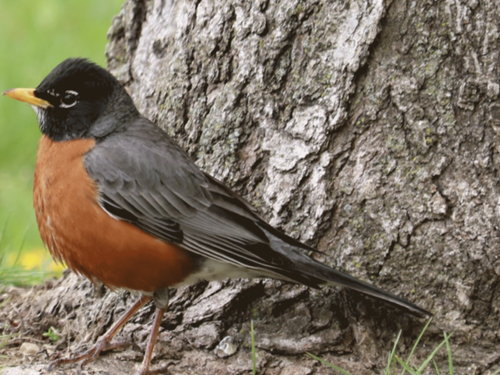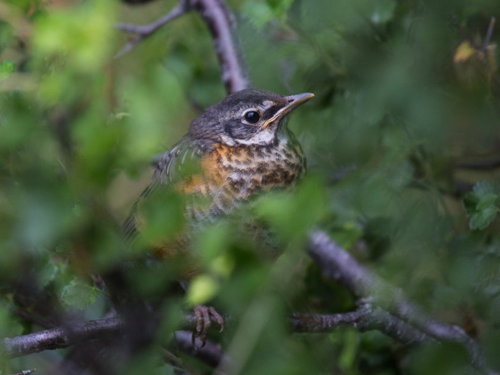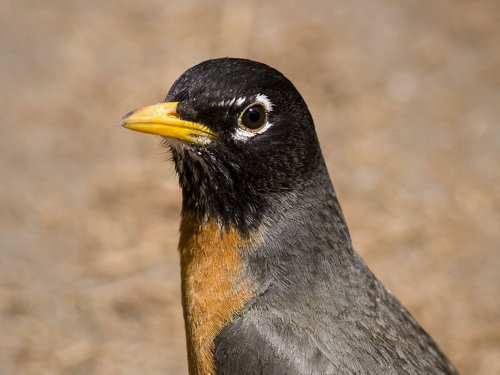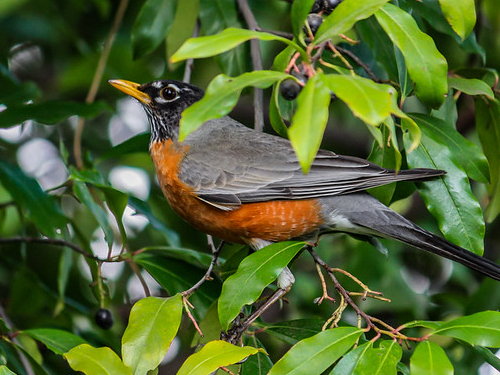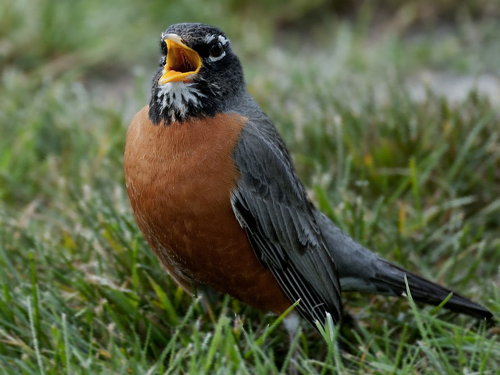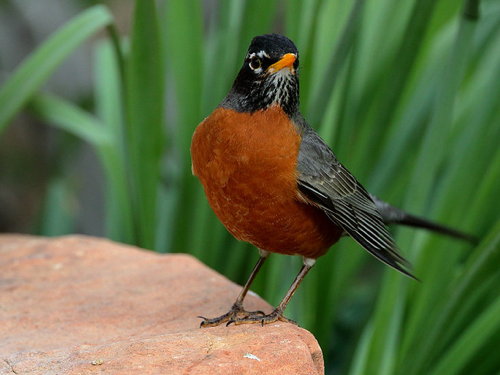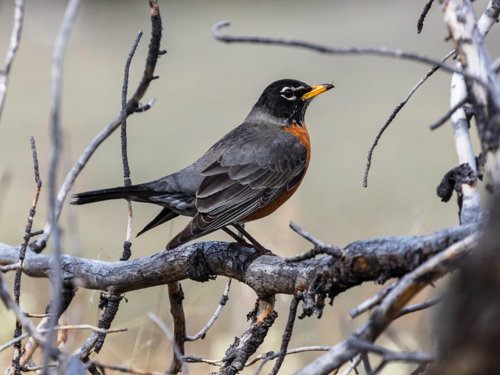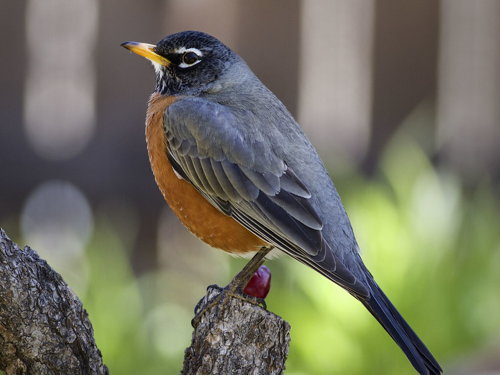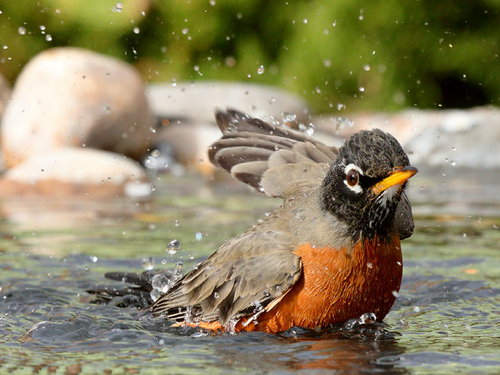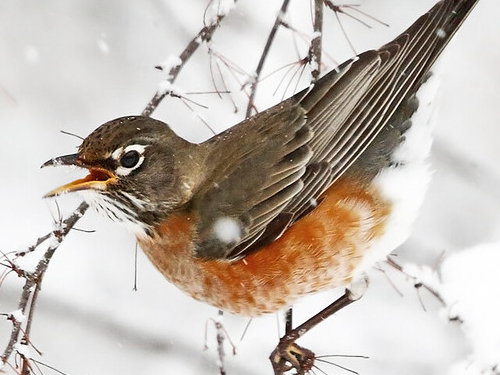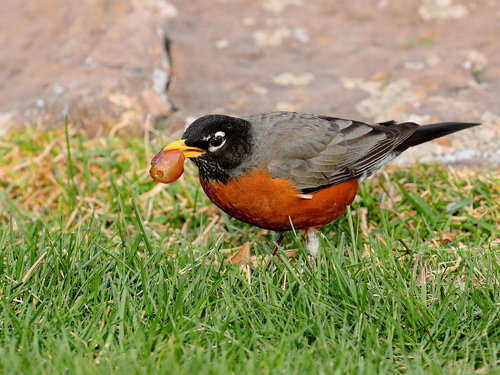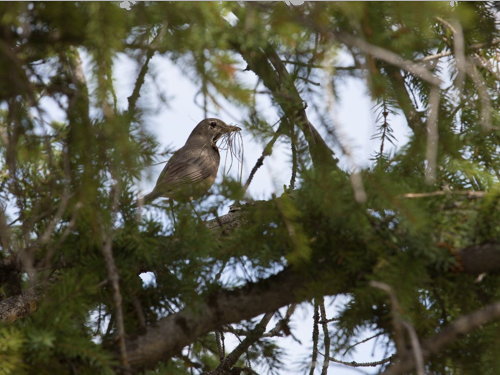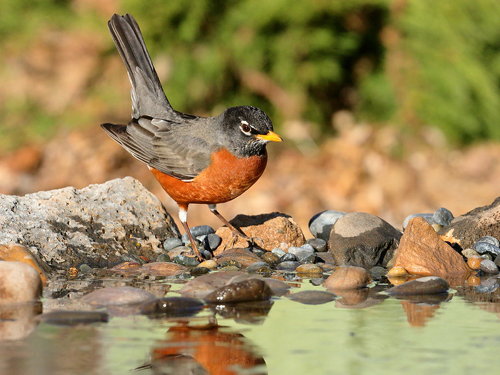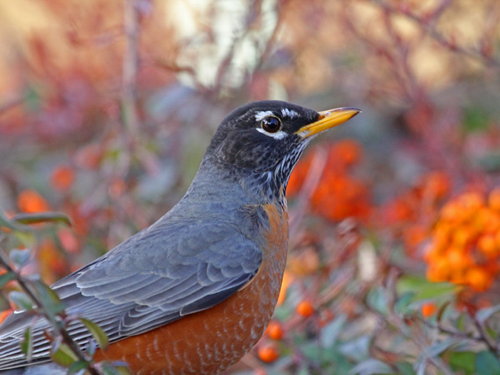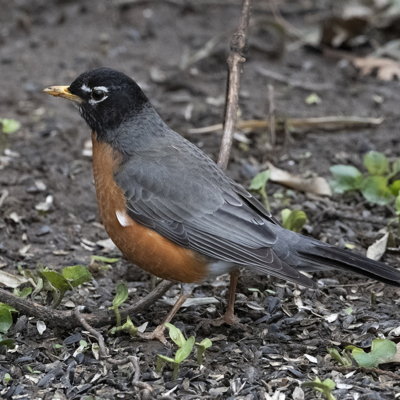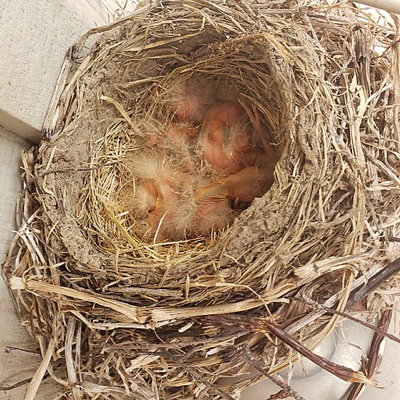American Robin
Scientific Name: Turdus migratorius
Type: Bird
Family: Turdidae (Thrushes)
Size: 9 to 11 inches long; 12 to 16-inch wingspan
Weight: 2.5 to 3.3 ounces
Life Span: average about 2 years in wild
Physical Description
American robins are large songbirds with long legs, a light yellowish bill, and a long tail. They are brown on their backs, reddish-orange on the breast, and white on their lower belly and under their tail feathers. They have white throats, streaked with black and white crescents above and below their eyes. Females are slightly smaller and paler in color than males. Young robins are brown and lightly speckled, only growing their red feathers after their first molt.
Female

Range and Habitat
American robins are the most abundant and widespread North American thrush. They have a wide range from Canada, throughout the US, and into Mexico. While not all of these birds migrate for the winter, those that do can potentially go as far as from northern Canada into southern Mexico.
American robins live in woodlands, fields, suburban backyards, parks, and grasslands with shrubs. They prefer open areas with short grass for foraging with a few trees and shrubs nearby for nesting and roosting.
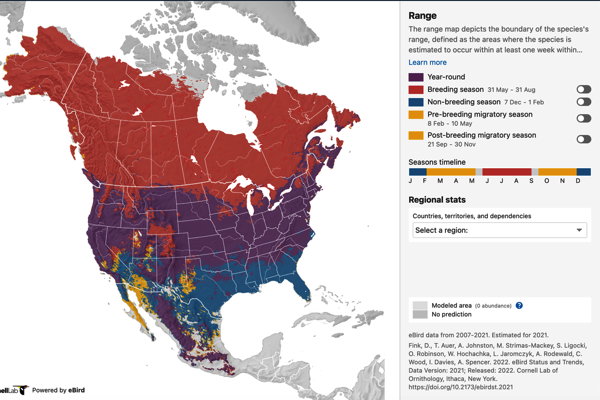
Diet
American robins have a varied diet. They will eat whatever is most readily accessible, depending on the season. During the breeding season, they will primarily eat soft invertebrates like earthworms and ground-dwelling insects. In winter, they switch to berries and other fruit. The young are mostly fed insects and earthworms.
Robins will eat different types of food depending on the time of day. They tend to eat more earthworms in the morning and more fruit later in the day.
Behavior and Social Life
American robins are most active in the daytime. They can often be heard singing at dawn or just before the first light sounding like sounds like someone saying “cheerily cheer-up”. They mostly forage on the ground, running and pausing on open lawns. They are known for their ability to locate earthworms, which they do by sight and not as has been suggested by hearing.
American robins are social birds, especially during the winter when they gather in large numbers around sources of food. In general, they form large flocks at night, roosting in trees, often in a secluded area of dense vegetation. However, they are less social during the breeding season when males will aggressively defend a breeding territory. Females will sleep at the nest during this time.
Foraging
Vocalizing
Song
Call
Catching Bug
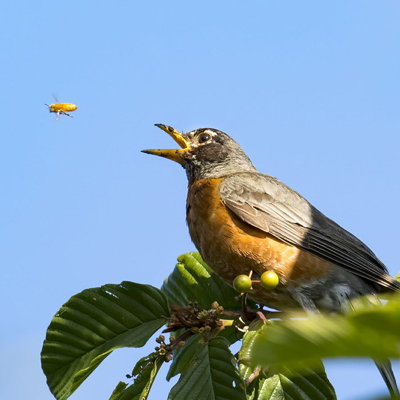
Bird with Worm
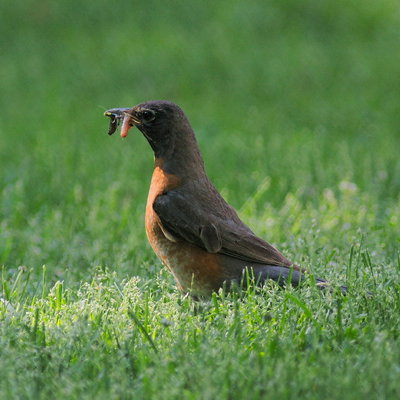
Tracks
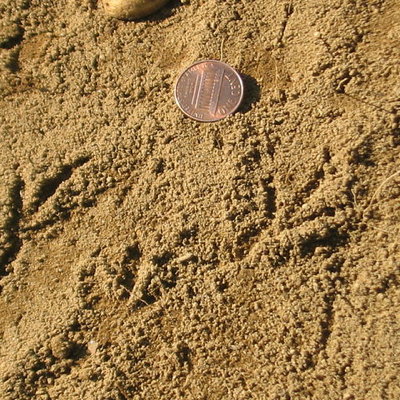
Life Cycle
Males arrive before females on nesting grounds. The males defend a territory by singing and sometimes fighting. Several males may pursue a female. The breeding season is from April through July, during which time males and females form pairs that stay together to share parenting duties.
Females are the primary nest builders. Cup-shaped nests of grasses and twigs held together with mud and lined with plant fibers. They are usually located on a horizontal branch at least six feet off the ground. However, they may be placed on ledges of houses and barns. The female typically lays three to five pale blue eggs which she incubates for about two weeks later. The young are cared for by both parents for first in the nest and then on the ground near the nest. At a month old the young robins will fly off on their own.
Feeding
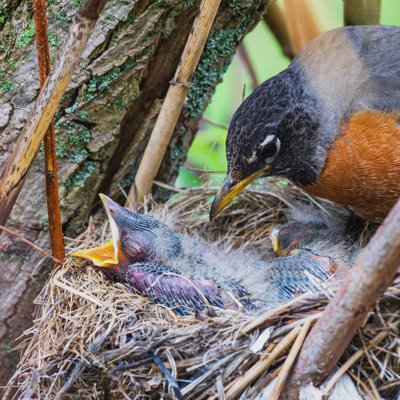
Juvenile
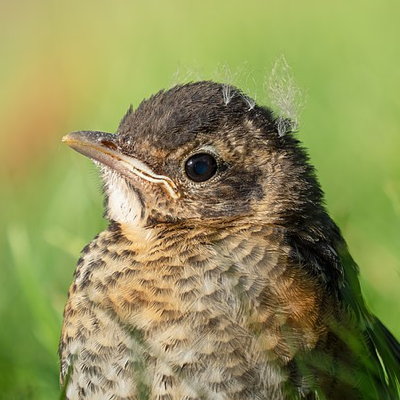
Title
Ecological Role
American robins help both to control insect populations and disperse fruit seeds of fruits. Adults also serve as prey for snakes, hawks, and cats. Squirrels, blue jays, crows, and ravens will eat robin eggs and chicks.
Interactions With Humans
Robins are effective in controlling pests that may damage crops and gardens. However, since they consume berries, they can decrease the amount of harvestable fruit. Also because robins often forage on lawns, they are vulnerable to pesticide poisoning.
Interesting Facts
- Dozens of different bird species (chats, flycatchers, and thrushes) have “robin” in their common name.
- The American robin was named for its resemblance to the unrelated European Robin.
- Not all robins migrate, those that do can travel up to 3,000 miles during their spring migration.
- Robins do not maintain pair bonds.
- Robin nests are often targeted by parasitic Brown-headed Cowbirds.
- American robins are so territorial that they will fight to the death to defend their area.
- Robins are loyal to their food sources, repeatedly visiting the same area or garden.
- Females often eat shells from eggs that have hatched for extra calcium.
- Each robin has a completely unique red breast pattern.
- Robins that eat fermented berries during winter can sometimes become intoxicated.
- Robin roosts during winter can be huge, sometimes including a quarter-million birds.

